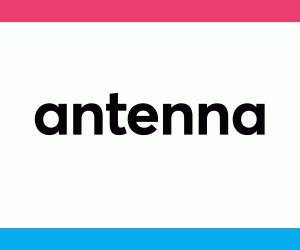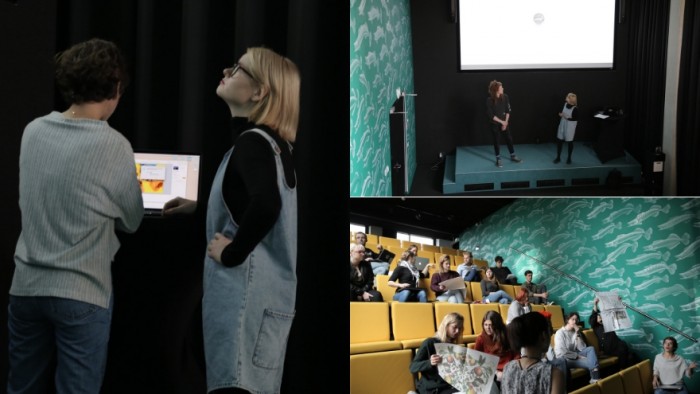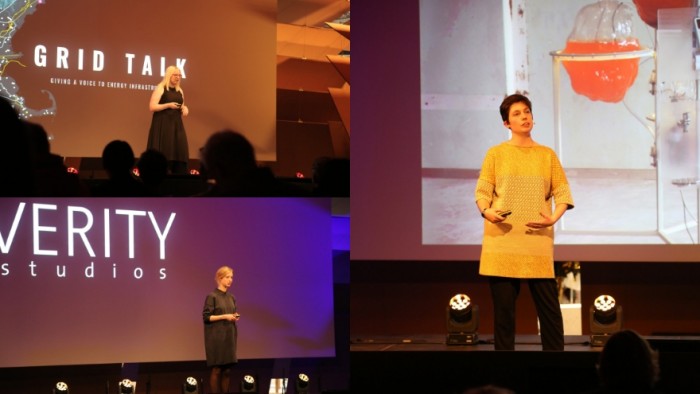Part of the Project
Design Indaba can come off as frenetic to those looking in from the outside. I can’t say I blame them.
As a journalist at the publication for the last three years, I’ve had the privilege to be a part of numerous projects, platforms and series.
From Another Light Up to SONOP to the Arch for Arch, and then to the annual behemoth that is Design Indaba Festival, we’re constantly moving, starting, finishing, and celebrating a project – all while planning to execute one more big idea or two or three.
It’s easy to get swept up – to fall in love with design and purpose-driven work. But it’s just as easy to become hardened, apathetic almost, as you cross your t’s and dot your i’s from one task to the next.
It can be a whirlwind with very few moments to look back, breathe and re-calibrate. I say this not to complain, but to contextualise a conversation that I recently had with a young US designer, Kelsey Wakefield.
Wakefield, an architect, was one of the graduates chosen for a project we launched together with Dutch Design Week last year called antenna. The project is a global scan of the next generation of designers.
Together we curated them from international design schools, picking 20 graduates presented innovative projects on a conference stage as part of the Dutch Design Week programme.
I didn’t attend the inaugural event in October 2017. So it took me by surprise when another Design Indaba staff member and creative all-rounder, Juanita Ferreira later described it as one of the best things we’ve ever done as a company.
I didn’t ask why. I watched the live stream.
I found myself thinking about that moment, fleeting as it was, when I spoke to Wakefield. Her passion and reverence for the antenna project, apparent from the moment we fixed our Skype connection, was infectious.
“I mean Juanita, a ball of fire, she like poured into us like, this is how you need to come out and do this and I saw so many people in just two days grow from being very timid people who didn't really believe in their story into people who were super big advocates and believed in themselves,” she gushed.
They were just graduates then, she reminded me. Many of them had never spoken publicly about their work before, and while we had put out feelers for the future of design, what we’d created inadvertently was a “little incubator for people who hadn’t been hit with reality yet.”
The call they got from Design Indaba was for most of them their first call-up into the world of design outside of academia. It was like an acknowledgement that it was good to be curious, empathetic and even courageous in a way that transcends discipline, country, and that ever-encroaching bottom-line of adulthood that calls on you to pursue a stereotypical career.
“I think what each one of [the antenna alumni] has that’s unique to other people is that all we had initially was a stupid hunch. We were all people who, yes, belong to different disciplines, going to school for a very certain thing. Yes, it was tangential to a very real world profession.
“Yet all of us have some stupid little inkling that we wanted to follow and we didn't let anyone tell us, no. Like with Bjorn who was like, ‘what about the bananas’. For me, it was like, ‘where does this (inkling) come from?’ We all had these seemingly dumb questions but didn’t let whatever the world was telling us get in the way of that.”
From rehearsal to performance
Wakefield’s project, Grid Talk: Giving a voice to energy infrastructures, traces the New England power system, New York State independent system and its ties to New York City, and the older system, the New York Steam System.
Charmingly, the speculative idea hopes to humanise energy and energy systems by making the underground pressure points of those systems play music. At the same time, her project also questions the designer’s place in energy advocacy.
It’s a mouthful. But the job of antenna and the job of Design Indaba’s Ferreira, is to turn speculative, intricate concepts like Wakefield’s project into emotive stories. It’s a skill Wakefield is still enthusiastic about having learned and it’s also what I missed about the project’s value to young people in design when it was first conceptualised.
Wakefield pointed specifically to Sarah Wisniewska, a polish photographer and communications designer who was afraid to take the stage at antenna 2017. “...the first time I met her she was just so scared. But she got up and she killed it and her story is so amazing,” said Wakefield.
“So I was like, no one needs to be afraid to tell their story and I think that’s also what [Design Indaba] gave us. [Antenna] gave us a platform to share a story and to be bold about it. I don’t know if other graduate programmes like this exist. Ones that give us the juice we needed to get up there and do it.
I still think about it like, every day pretty much.”
Now Wakefield, an architect at CMG Architecture in the United States, occasionally facilitates workshops at Yale University and has found a passion for teaching and talking about ideas.
She’ll join antenna again last October as an MC, mentor and as for the class of 2019, she says:
“My advice to everyone [at antenna 2019] is to just talk. Talk to everyone there and talk with reckless abandon. The world needs fixing. That’s undisputed. So let’s fix it and if we can cross country lines, these issues are universal. That’s what made me feel just at home.”
#antenna2019 takes place on 21 October 2019 during Dutch Design Week in Eindhoven. Click here for more details.









